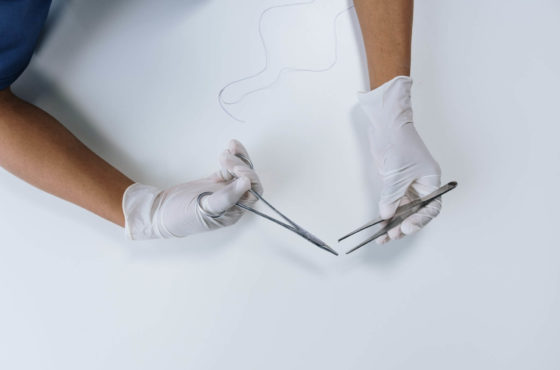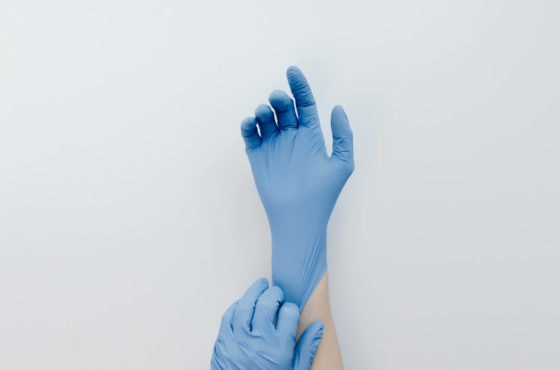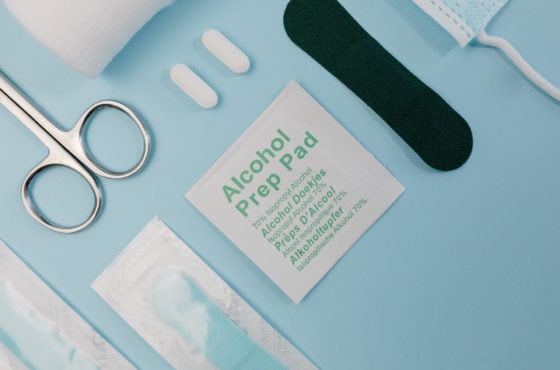The use of surgical stapler has been widely preferred by surgeons over sutures and stitches, mainly because they have been known to provide more convenience when it comes to surgical wound closure.
But did you know that the medical device has been the target of many lawsuits in the United States for quite some time now?
In fact, an increasing number of plaintiffs who have filed a surgical stapler lawsuit claim that these devices can potentially fail or malfunction, resulting in serious injuries, complications, and even death in patients.
An investigative report by Kaiser Health News also showed how thousands of cases of surgical stapler and staple malfunctions were under-reported for years.
Just how dangerous is surgery with staples?
Continue reading the article to learn more about these devices and why they have recently caused a stir in the medical field.
How Do Staples Work in Surgery?
A surgical staple is used in surgery to close a skin wound or incision. Due to a number of reasons, the medical device has long been considered as a better option compared to suture or stitches.
For instance, they have been heavily marketed as time savers, they allow one’s surgeon to close a wound with minimal damage, and patients spend less time under anesthesia when a surgical staple is used.
However, unlike stitches, staples do not dissolve as your wound or incision heals. Because of this reason, staples may require special care and treatment following your surgery and must be removed by a surgeon once the wound has healed.
Surgical staples can be made of titanium, plastic, or stainless steel. The plastic material is commonly used in patients who are allergic to other metals found in surgical staples.
But even though this medical device has been known for some of its advantages compared to traditional stitches, surgical staples have also been associated with a plethora of risks and complications.
How Long Should a Surgical Staple Remain in Place?
The amount of time your staples must remain in place following surgery mainly depends on the incision site as well as the size of the surgical incision and can vary from 2-3 days to three weeks.
But even if the duration for each patient is different, you should still have your staples removed at the right time.
Some of the signs that your staples are ready to be removed are clear evidence that your wound has healed well enough and won’t reopen, there are no signs of infection, and no pus, blood, or fluid draining from the area.
Never try to remove staples at home or on your own.
Only a licensed medical professional can remove your staples using specific tools while following the right procedure to safely remove them without causing further complications.
What are the Risks of Surgical Staples?
In 2019, the U.S. Food and Drug Administration informed health care providers about concerns on cases of surgical stapler malfunction through a letter. The regulating agency indicated that they have received more than 41,000 medical device reports on defective surgical staplers and staples. The reports included:
- 9,000 serious injuries
- 32,000 malfunctions
- 366 deaths
Some of the most common surgical staple and stapler malfunctions reported to the U.S. Food and Drug Administration include a malformed staple, failure of the stapler in firing the staple, misfiring, application of the staples to wrong tissue, and a surgeon applying the wrong size of staples to a tissue.
All of which have resulted in complications that may either occur while the surgical procedure is ongoing, or may only show up days after the surgery.
Some of the surgical stapler complications reported by patients to the FDA include:
- internal bleeding
- tearing of internal tissue and internal organs
- infection at the incision site
- sepsis (the body’s extreme response to an infection)
- fistula (an abnormal connection between two body parts, like an organ and another structure)
- life-long digestive issues
- higher risk of cancer recurrence
- the need for an additional surgery
- death
A malfunctioning stapler has a unique ability to harm a patient once they malfunction. Often used in minimally invasive surgeries, they are meant to both cut tissue and blood vessel and then quickly seal them.
Patients have been gravely injured when staplers have failed to fire or seal tissue, suffering from excessive bleeding or infections if stomachs or intestines aren’t sealed properly.
Recent Surgical Stapler and Staple Recalls
Several surgical stapler and staple recalls have been made over the years, proving just how risky the use of these medical devices in a surgery can be.
Reasons behind the recalls range from defects that resulted in surgical staple injury in patients to defects in designs caught by the companies during the manufacturing stage of the products.
The most recent surgical stapler recall was made by surgical stapler manufacturer Ethicon in 2019 when it pulled off the Endo-Surgery Curved Intraluminal Stapler from the market, citing reasons including insufficient firing and failure to form complete staples.
A month after, the FDA categorized the recall as Class I, which means that the affected lots of the Ethicon surgical stapler can cause serious side effects, injuries, complications, and even death to patients.
Meanwhile, in 2018, Medtronic recalled the Covidien Endo GIA Articulating Reloads, for which the manufacturer reported at least five injuries. The device was found to possibly fire an incomplete staple line if misassembled, which could result in bleeding or leakage of contents of the intestine to the body cavity.
All in all, from 2013 to 2019, manufacturers have recalled more than 3.4 million surgical staplers and staples, including cartridges and components. You can see the full list of recalled devices in the FDA surgical stapler recall page.
Since 1988, surgical staplers were classified as Class I devices, which means it was considered low-risk. This classification also meant that manufacturers are not obligated to inform the FDA of any upgrdes to existing products before selling them.
It was only in 2019 that the agency announced that it was taking steps to change the classification of surgical staplers as Class II or moderate risk devices, which would mean that they would have to be notified about new models of the devices first before they allow its sales.
Surgical Stapler Misuse Listed as Top Concern in Medical Technology
The ECRI Institute, an independent health safety group that keeps a database of hospital-reported adverse events, named surgical stapler misuse as the top health technology concern of 2020.
According to the nonprofit, the most common problems with surgical staplers occur when doctors tend to choose the wrong size of the surgical staple to be applied, or when they do not have enough visibility to clearly see where they are applying the staple.
How We Can Help You
According to recently filed complaints in the surgical stapler lawsuit, plaintiffs have accused companies of manufacturing the medical device with defective designs, which has ultimately resulted in patient injury and complication.
However, surgical stapler manufacturers like to put the blame on health care providers and would outright ignore the defects in the device.
If you or your loved one suffered due to a surgical stapler malfunction which led to a need for additional surgery, or if you have sustained injuries related to a defective surgical stapler, then you can contact us for a free case evaluation.
If you qualify for a case, we may be able to provide you with the necessary legal steps you should take from here on, and help you get in touch with the right surgical stapler lawyer for your needs.



